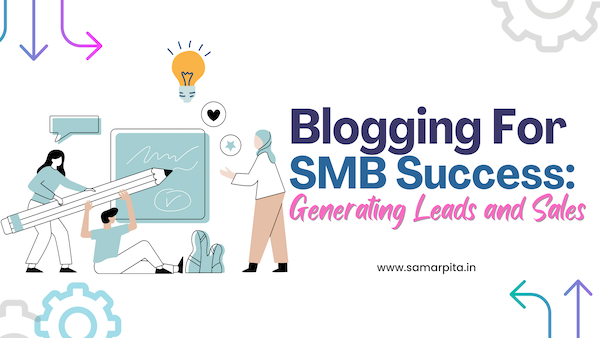In today’s digital age, small businesses are discovering the power of content marketing. It’s not just about creating and sharing content; it’s about achieving concrete results. To do that, you need to keep an eye on the right metrics. In this blog post, we’re going to delve into the essential content marketing metrics that matter for small business success, all explained in simple terms.
Why Metrics Matter
Before we dive into specific metrics, let’s understand why they are vital. Metrics are like your business’s health checkup. They tell you what’s working and what needs improvement. For small businesses with limited resources, it’s crucial to invest in strategies that bring tangible results. Tracking the right metrics allows you to do just that.
Also Read: Five Reasons Why Your Business Needs Content Marketing
1. Website Traffic
This is the foundation of your content marketing efforts. Website traffic shows how many people visit your site. When it comes to small businesses, increasing website traffic is often a primary goal. It’s the first step in getting people to notice your products or services.
2. Page Views
Page views tell you which pages on your website are getting the most attention. By understanding which content is popular, you can create more of it. If a particular blog post or product page is getting a lot of views, it’s a good sign that your audience is interested.
3. Conversion Rate
Getting people to your website is one thing, but turning them into customers is the ultimate goal. The conversion rate measures how many visitors take a desired action, like signing up for your newsletter or making a purchase. Small businesses need this metric to gauge the effectiveness of their content in driving sales.
4. Bounce Rate
When someone lands on your website and quickly leaves without exploring further, it’s called a bounce. A high bounce rate can indicate that your content or website isn’t holding visitors’ interest. Small businesses should aim for a lower bounce rate to keep people engaged.
Also Read: The Art of Crafting Compelling Website Copy That Converts
5. Click-Through Rate (CTR)
If you’re running email campaigns or online ads, the CTR measures how many people click on the links you provide. A high CTR suggests that your content is compelling and persuasive, driving traffic to your website and potentially converting leads into customers.
6. Social Media Engagement
For many small businesses, social media is a key part of their content marketing strategy. Metrics like likes, shares, and comments on social media posts reveal how engaging your content is. Social media engagement helps you reach a broader audience and build a loyal following.
7. Return on Investment (ROI)
ROI is the bottom line. It tells you whether your content marketing efforts are profitable. Small businesses often work with limited budgets, so knowing that your investment is paying off is critical. It’s a simple calculation: (Profit – Investment) / Investment.
8. Customer Lifetime Value (CLV)
This metric helps small businesses understand the long-term value of a customer. The more you can increase the CLV, the better. It involves factors like repeat purchases and customer loyalty, showing how well your content marketing is retaining customers over time.
9. Email List Growth
Building an email list is essential for small businesses. It allows you to connect with your audience directly. Measuring email list growth is crucial because it shows how effectively your content is convincing people to subscribe.
Also Read: Five Reasons Why Your Business Needs Content Marketing
10. Customer Feedback
Your audience’s feedback is a valuable metric. Are customers leaving positive reviews? Are they sharing their experiences? This qualitative data can provide insights into the impact of your content marketing on customer satisfaction.
Conclusion
Small businesses can thrive in the digital age by harnessing the power of content marketing. To ensure success, it’s crucial to monitor the right metrics. These metrics tell you if you’re on the right track and help you make data-driven decisions. Remember, it’s not just about producing content; it’s about producing results. So, start measuring, analyzing, and optimizing your content marketing efforts today to achieve small business success.
***
If you are looking for an excellent manuscript editor, someone to create content for your business, or an expert to help build your personal or professional brand on social media, then look no further and connect with me at editor@samarpita.in I can be followed on instagram at @samarpita and on twitter at @samarpitadotin.
***********
Read my ebook WRITE. EDIT. PROMOTE. to learn the basics about becoming an author – from writing your own book, to editing your first draft, and to promoting your book yourself! You can also read my ebook How To Write A Story Effectively and learn some valuable lessons about how a story can go from average to extraordinary. This book is part 1 of the series.
In fiction, I have two short stories for children in an ebook called Bedtime Stories.


